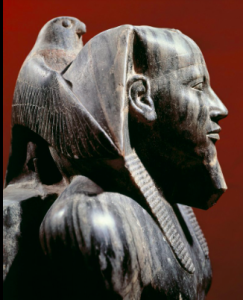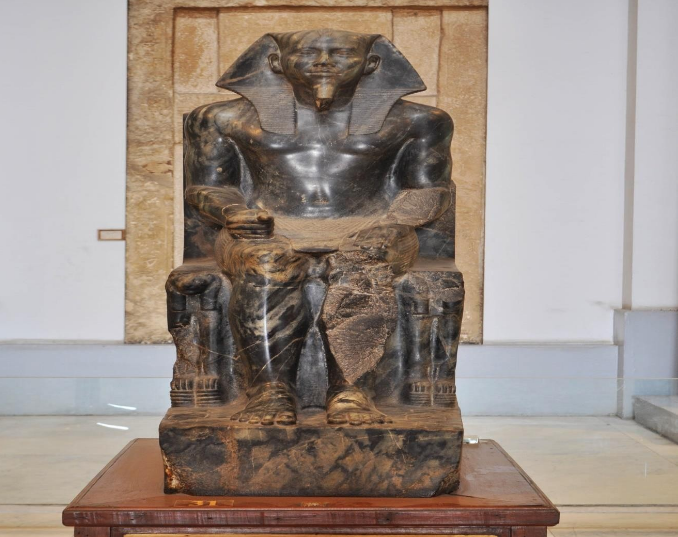King Khafre
Khafre ascended to the throne after his half-brother, Djedefre, the son of Khufu. At the beginning of his reign, there was a dispute with his half-brother’s sons, but he managed to secure the throne. Khafre is best known for producing one of the greatest statues of ancient Egypt, a diorite sculpture now housed in the Egyptian Museum. This statue was discovered by Auguste Mariette in 1860 within Khafre’s valley temple. Khafre also constructed his own pyramid complex, which includes the iconic Great Sphinx. His pyramid, the second largest at Giza, was originally 143 meters tall but now stands at 136 meters. Built on a base of 215 square meters, it has two entrances on its northern side and still retains a portion of its original casing stones at the apex. Despite being shorter than his father Khufu’s pyramid, it appears taller due to its elevated location. The Statue of Khafre This statue depicts Khafre, the builder of the second largest pyramid at Giza. Discovered in the valley temple of his pyramid complex, the statue shows the king seated confidently on a throne. The sides of his throne are adorned with symbols representing the unification of Upper and Lower Egypt, signifying his rule over the entire land. The god Horus, depicted as a falcon, stands behind the king’s head, his wings spread protectively. Khafre’s reign is estimated to have lasted from 2555 to 2532 BC. The statue is carved from diorite and was found at Giza. We will explore Khafre and the Great Sphinx in more detail in our archaeology section.






